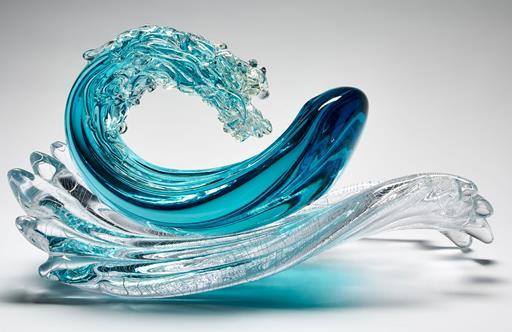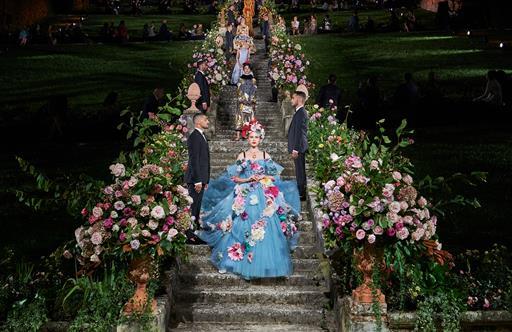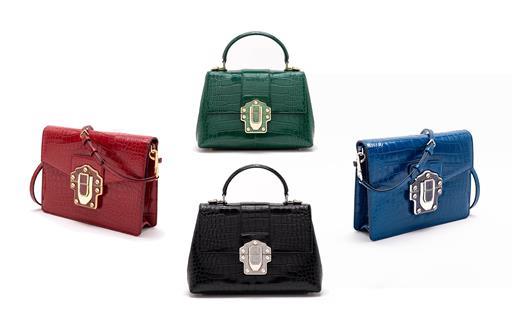The Water’s Fine!
From the utilitarian wool singlet to the racy Speedo and the Baywatch-style high-cut one-piece, Mark C O’Flaherty unpacks more than a century of game-changing trends in swimsuits.
A bright blue body of water, whether an infinity pool or bath-temperature tropical sea, is one of the most glorious sights in summer. It’s also one of the reasons why the work of photographer Slim Aarons, who shot so many of his classic high-society images by pools in Antibes, Brazil, Mexico and Palm Springs, is so iconic and beloved. Those images radiate with the saturated tones of a really good time. It’s also why we all look at pictures of a pool on a hotel website before checking out the bedrooms. You want to airbrush yourself into that scene, wearing your favourite primary-red Eres one-piece with its stark straight neckline, or your Orlebar Brown shorts with a Gray Malin photoprint of bathers on the sand in the Hamptons. It’s primal: stop work, strip down and immerse yourself in something elemental and sensual.
One of the most refreshing exhibitions in London this summer, the Design Museum’s Splash! A Century of Swimming and Style (through 17 August) explores the early aesthetics of the boom in city lidos in the 1920s through to today’s state-of-the-art swimwear. This is a joyful series of galleries capturing the feel-good nature of disrobing in the sun and basking beside the water. It’s about time well spent away from work stress as much as it is style. And it’s fascinating to see how things have changed over the decades. Between the wars, men were still wearing singlets. Think of Tadzio and his friends in their striped all-in-ones in the classic 1971 film Death in Venice. Women wore, essentially, short-layered dresses, often with millinery to match. You dressed up for a swim. Decades later, we tend to use the occasion to expose as much as possible while also displaying a sort of fashion shorthand: a Pucci or Missoni print translates brilliantly to a bikini.
 Actress Pamela Anderson dons Baywatch’s era-defining high-cut, scoop-neck one-piece (photo: Zuma Press, Inc./Alamy)
Actress Pamela Anderson dons Baywatch’s era-defining high-cut, scoop-neck one-piece (photo: Zuma Press, Inc./Alamy)
 A lamé one-piece from Missoni’s latest swimwear collection (photo © Missoni)
A lamé one-piece from Missoni’s latest swimwear collection (photo © Missoni)
Indeed, swimwear is a niche part of the global apparel industry, defined by functionality but also by the way it can make people feel amazing at their most vulnerable. Legendary Tunisian couturier Azzedine Alaïa’s earliest work explored the possibilities of bathing costumes for women, working with innovative fabrics that his close friend, the furniture designer Pierre Paulin, went on to use in chairs. And it’s fabrication that propels changes in the way swimwear looks. Vilebrequin, which launched in 1971 in Saint-Tropez, is known for a straightforward approach to cut, but with super-strong prints (collections have incorporated artwork by Massimo Vitali and Kenny Scharf). “We are constantly evolving, though,” says CEO Roland Herlory. “We have introduced recycled fibres, and three years ago began using a divine 100 per cent wool jersey with a 100 per cent linen water-compatible jersey.”
While Alaïa died in 2017, his Paris maison continues to create swimwear using state-of-the-art laser-cutting techniques. New designers choose fabrics to define their brands: when American designer Lisa Marie Fernandez launched her line, it was through her love of swimming and a dissatisfaction with not being able to find attractive pieces in neoprene. Others design according to a niche clientele: Turana Atash established her Turana brand in 2023, focusing on chic swimwear primarily for Middle Eastern women who want “modest fashion” but still optimum performance, whether for laps of breaststroke or surfing.
 Trailblazing designer Willi Smith and his sister, Toukie, pose for legendary photographer Anthony Barboza in 1978 (photo courtesy of Anthony Barboza)
Trailblazing designer Willi Smith and his sister, Toukie, pose for legendary photographer Anthony Barboza in 1978 (photo courtesy of Anthony Barboza)
 London-based designer Turana Atash focuses on modest (and chic) swimwear (photo © Turana Atash)
London-based designer Turana Atash focuses on modest (and chic) swimwear (photo © Turana Atash)
Europe has a distinct, often restrained sensibility in swimwear, and it was American designers who brought new glitz to it in the 1970s and 1980s with an overt sexuality that many in fashion had shied away from. The epitome of the trend was surely the TV show Baywatch at the end of the 1980s (an image of a young Pamela Anderson, in a red one-piece clutching a lifeguard’s float, appears in the Design Museum exhibition). Another memorable image in Splash! is of the great Black hope of American fashion, Willi Smith, founder of the dynamite label WilliWear. In 1978, he is captured in a photograph next to his sister, the model Toukie Smith. He is wearing his own preppy take on streetwear, while she is in a cleverly cut red bikini with twisted straps that looks like a one-piece from the front and a two-piece from the back.
All fashion is, to some degree, about sex – it’s exploring the concept of dressing and being undressed – but no category exemplifies this more so than swimwear. In the course of her research, Splash! curator Amber Butchart was particularly fascinated by the influence of gay designers – including mid-century British talent Bill “Vince” Green, and Peter Travis, who designed the brief for Speedo in 1960 – in shaping mainstream style for all men. “Both figures shifted the paradigm in terms of what was acceptable to wear to the beach,” says Butchart. “And the term ‘Speedo’ is now shorthand for any very small men’s swimming briefs, while also being a hugely influential brand, developing the LZR Racer swimsuit with Nasa scientists.” Alaïa’s three-piece “trikini” pairs a hooded T-shirt with mid-rise briefs and a minimalist bandeau top (photo © Alaïa)
Alaïa’s three-piece “trikini” pairs a hooded T-shirt with mid-rise briefs and a minimalist bandeau top (photo © Alaïa)
 A timeless swimsuit designed by Norma Kamali in 1989 (photo © Norma Kamali)
A timeless swimsuit designed by Norma Kamali in 1989 (photo © Norma Kamali)
Norma Kamali also had a hand in revolutionising the shape of swimwear. The American designer launched her first pieces in the 1970s, but has always looked to the future: “The design that got the most attention and catapulted me in the world of swimwear was a small, high-legged bikini with strings crossing over the torso to connect the small bra and bottom,” she explains. “I’m still using the design today – there’s a sequin and mesh version in my current collection. It’s lived on, and it’s a particularly popular style for female bodybuilders.”
Around the same time that Kamali was creating her first designs, former dancer Rudi Gernreich was busy making ever smaller swimsuits, building on his success with the thong and monokini. “Fashion is dead!” he proclaimed at the start of the 1970s. “In the new environment of the future, people will accept their bodies. Clothes will be utilitarian, organic and minimal.” Fashion may be different rather than dead, but we’re definitely in a version of that future he was talking about. Even if it’s just for daylight hours at the hotel pool.




















